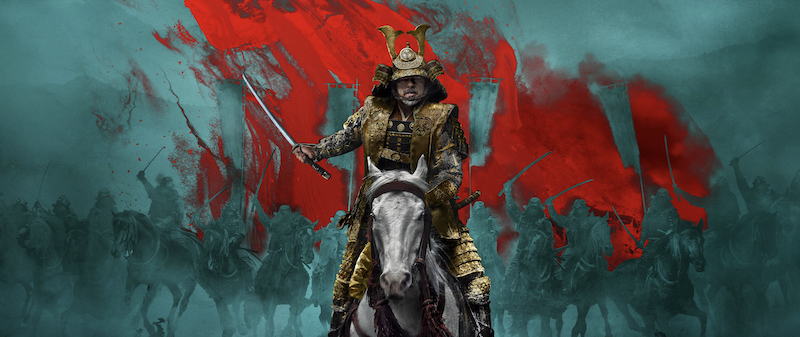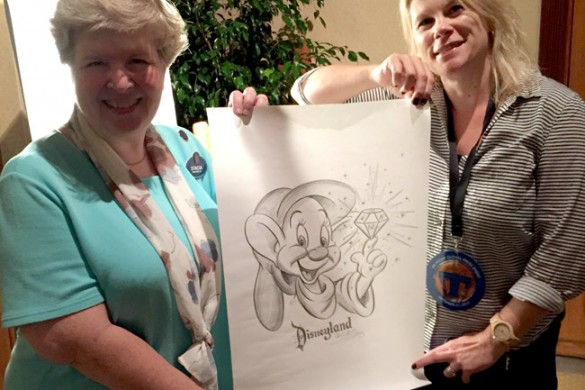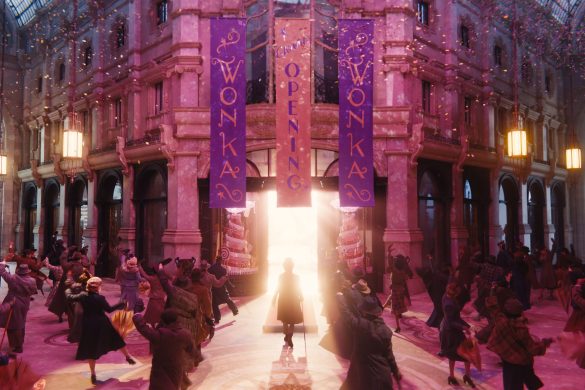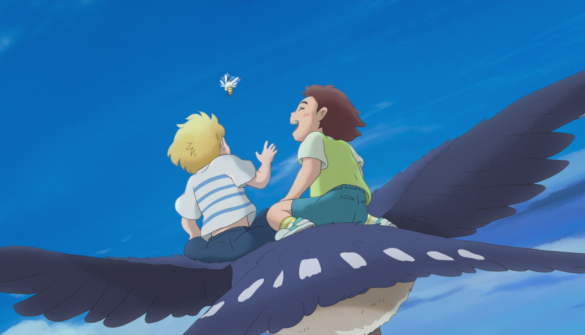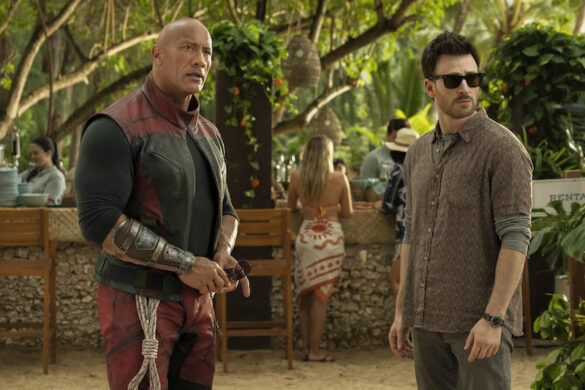FX’s “Shōgun” is a captivating historical epic that stays true to the spirit of the source material while also being elevated by powerful performances, outstanding production design, and meaningful representation.
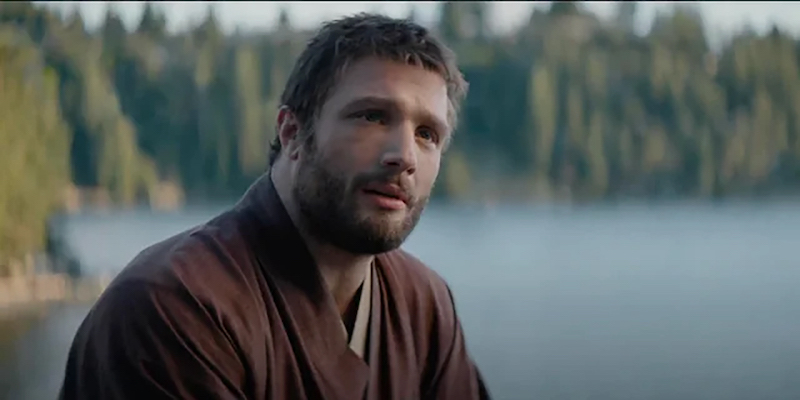
This is a review of the first episode of “Shōgun,” a ten-episode miniseries that can be seen exclusively on FX.
Based on the acclaimed epic 1975 novel by James Clavell, “Shogun” follows John Blackthorne (Cosmo Jarvis), a navigator aboard a doomed ship sailing across a treacherous ocean to get to Japan. He and his crew get shipwrecked and are immediately imprisoned by samurais. Because of the language barrier between the two, a filthy John is unable to communicate his and his crew’s innocence to his captors. Enraged at how he’s being treated, John shows anger towards the samurai, who then returns the favor by urinating on him. Because John and his crew are at religious and political odds with Portuguese traders and the Catholic Church’s Jesuit order, their chances of survival are decreased immensely. But because John has such a silver tongue and knows more about the Portuguese traders and Jesuit order, he can provide the Japanese with insider information.
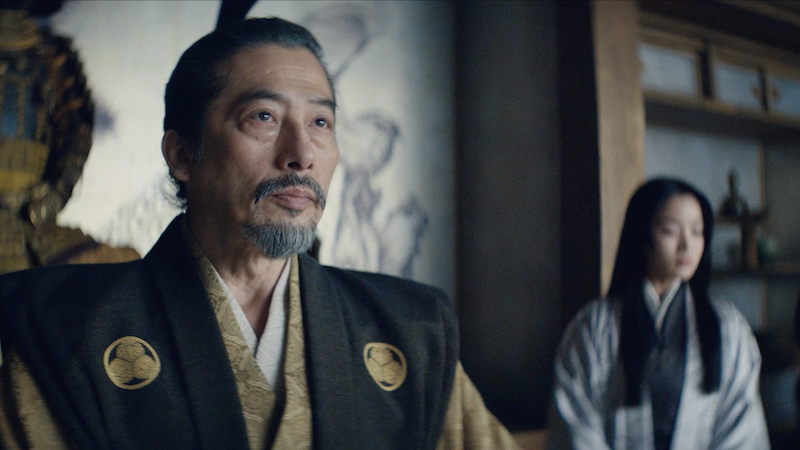
Meanwhile, a Council of Regents is forged after the death of the reigning Taikō. They’ll govern Japan until the late leader’s eldest son comes of age. But Lord Ishido (Takehiro Hira) plans an expansion of his fiefdom in secrecy and casts suspicion on the only person who stands in his way: war hero and Lord Yoshii Toranaga (producer Hiroyuki Sanada). Toranaga wants peace for the land, but his growing influence and independence concern the other regents. As such, Ishido plots to have him impeached. So, to protect his fief, the brilliant strategist Toranaga will use Blackthorne and the shipwreck to gain a tactical advantage over those who threaten him.
As all of this goes on, Blackthorne, now considered a high-value asset, witnesses the Japanese culture and must acclimate to a world he knows nothing of. After Blackthorne is bathed and made presentable, he is sent to Osaka with Portuguese pilot Rodrigues (Nestor Carbonell). The two make a begrudging friendship aboard the large galley that rows into a massive storm and gets hit by crashing waves. When Rodrigues goes overboard, Blackthorn is the one who sails the ship into a safe harbor and rallies a few samurais to join in rescuing Rodrigues. While the episode ends there, the remaining episode will see Blackthorne and Toranaga’s destinies intertwine and how their alliance could change the future of Japan.
While this is a review of the pilot episode, there’s no denying creators Justin Marks and Rachel Kondo’s ambitious efforts to adapt Clavell’s sweeping period epic into a fully engaging limited series that pays its respect to the source material while also amplifying the Japanese’s crucial contributions both behind-the-scenes and in front of the camera. Blackthorne serves as a guide to those unfamiliar with the history of Feudal Japan and the language.
To be able to work on such an ambitious project with the number of Japanese actors who are telling a Japanese story spotlights how far we’ve come to bring more authenticity to everything that we watch. The Japanese cast speaks their own language, with subtitles helping to bridge the gap between the two worlds. The subtitles also break down those barriers while allowing viewers to have a greater appreciation for the storytelling. To help capture that frustrating experience of having a language barrier, Toranaga assigns Toda Mariko (Anna Sawai) as Blackthrone’s translator. It’s a well-placed narrative device that allows the audience to experience Blackthorn’s mistrust of his translator. If the audience and Blackthorn don’t know the language, how should they trust their hosts?
In one episode alone, “Shōgun” delivers character work that is rich and complex, world-building that is exciting, a complicated political web of intrigue, and action sequences that are as brutal in their violence as they are beautiful in their presentation. Sanda’s reserved performance portrays Toranaga as a brilliant strategist whose lack of expression is a brilliant way to keep his motivations a secret from other characters and the audience. It’s not so much to set him up as a character we can’t trust but as someone who has yet to reveal his plans for a better Japan. His presence demands respect, and you get that sense when everyone around him pays their respect to the aged leader who balances duty to his people with protecting a culture that threatened to be overrun by foreign interlopers who are weaponizing religion and attempting to monopolize trade.
Mariko is also a reserved character and a Christian convert who can’t bear to see a mother lose her son because his father insulted one of the Council of Regents. Her sympathy speaks volumes as she gently persuades a grieving mother to give up her son to be murdered along with his father, who must commit seppuku after insulting one of the Council of Regents. Mariko is powerless to reverse course and, as such turns to her Christianity to help her come to terms with what she’s done.
Jarvis’s performance is equally as compelling. Though Blackthrone’s introduction is bumbling at first, the man is just as much of a strategist as Toranaga. Blackthrone’s tough act is a front that reflects his fear that he could die in an unknown world. It’s an unknown world that many have considered a legend, so he can’t help but be in awe of everything he sees. But as an outsider, he has to tread carefully because he doesn’t know the customs or the law. He learns very quickly what can happen if he crosses or offends someone. The look in his eyes when he sees a villager get beheaded, and the gutted reaction he gives when one of his crewmates screams in pain as they get boiled alive shows us the absolute terror he is feeling to be in such an unfortunate situation.
Fortunately, fortune favors bold, as his survival instincts pair nicely with his quick thinking. The latter will help him gain the approval of other samurai during the aforementioned storm that the galley has to weather.
The stunningly beautiful cinematography pulls us into a world that balances the natural and the manufactured. From towering forest trees to the gentle fog that blankets the Japanese coast, it’s impossible not to be enraptured by the beauty of it all. All of that is juxtaposed against castles and other structures that symbolize the nation’s urbanization and march towards the modern era as people move from their rural life to cities of prosperity and development. The world-building within this gripping story peers into the environmental, geographical, political, and societal aspects of a bygone era. However, it’s not without its complications, as audiences are thrust into a world ruled by a hierarchal caste system where overlord and vassal are law.
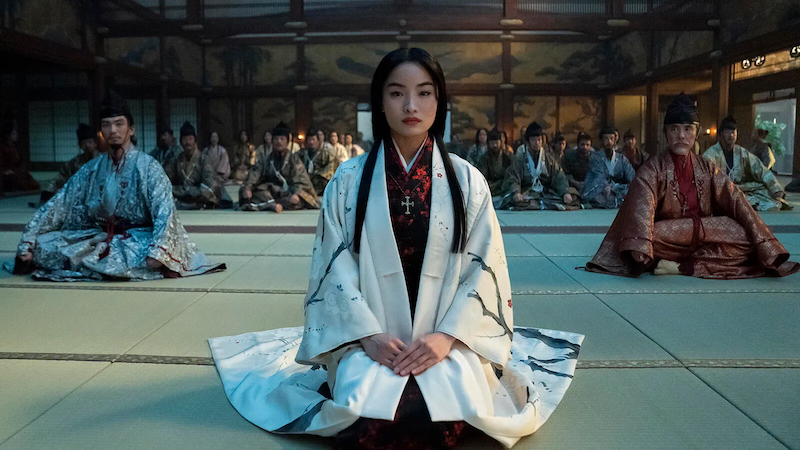
Marks and Kondo and their writing team pen a compelling story full of complicated political intrigue, meaningful authenticity, excellent world-building, and outstanding action sequences. Those elements add depth and nuance to a series that hits the ground running and doesn’t stop. The Sanada, Sawai, Jarvis, and the rest of the cast deliver stellar performances that elevate the series to soaring heights while also amplifying the international efforts it took to bring this epic story to life. Epic in scope, world-building, and storytelling yet intimate in its character work, dialogue, and representation. “Shōgun” is an ambitious series that reminds us that even though there’s a slow build-up and the convoluted political systems require some light historical knowledge, audiences are rewarded with a fully entertaining story full of action and emotional depth.
Shōgun will premiere with its first two episodes on February 27, 2024, on Hulu and FX. The remainder of the 10-episode series will be released weekly.
10/10

